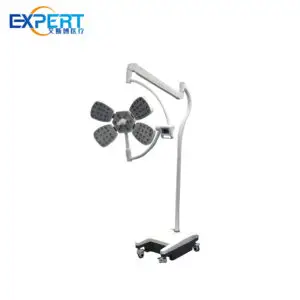Address
304 North Cardinal St.
Dorchester Center, MA 02124
Work Hours
Monday to Friday: 7AM - 7PM
Weekend: 10AM - 5PM
Welcome to My Blog!
Before we dive into the content, I’d love for you to join me on my social media platforms where I share more insights, engage with the community, and post updates. Here’s how you can connect with me:
Facebook:https://www.facebook.com/profile.php?id=100071234835011
LinkedIn:https://www.linkedin.com/company/74943205/admin/dashboard/
YouTube:www.youtube.com/@shandongexpertmedicalequip4695
TikTok:www.tiktok.com/@expertmedical
Now, let’s get started on our journey together. I hope you find the content here insightful, engaging, and valuable.

Surgical exam lights, often referred to as surgical lamps or operating lights, are indispensable tools in modern healthcare settings. These specialized lighting systems provide the necessary illumination for surgical procedures, ensuring optimal visibility for surgeons and medical staff. By delivering precise, shadowless illumination, surgical exam lights significantly contribute to the success of surgical interventions.
Surgical exam lights are meticulously designed to provide shadowless illumination, ensuring that surgeons have an unobstructed view of the surgical field. These lights are typically mounted on ceiling-mounted or mobile stands, allowing for flexible positioning and adjustment to focus the light on the desired area. Key features that distinguish surgical exam lights include:


Surgical exam lights can be categorized based on their light source and mounting system:









When selecting surgical exam lights for a healthcare facility, several key features should be carefully considered:
Surgical exam lights play a pivotal role in the operating room. They provide the essential illumination that enables surgeons to perform complex procedures with precision and accuracy. Adequate lighting is crucial for identifying delicate anatomical structures, minimizing surgical errors, and improving patient outcomes. Additionally, well-designed surgical lights can reduce eye strain and fatigue for surgical staff, enhancing their overall performance and well-being.

| Feature | Halogen Lights | LED Lights |
|---|---|---|
| Energy Efficiency | Low | High |
| Lifespan | Short | Long |
| Color Temperature | Warm | Adjustable |
| Initial Cost | Lower | Higher |
| Environmental Impact | Higher | Lower |
Surgical exam lights are indispensable tools in modern healthcare, providing the essential illumination for successful surgical procedures. By understanding the different types of surgical lights and considering key features such as intensity, color temperature, beam angle, and shadow elimination, healthcare facilities can select the optimal lighting solutions to meet their specific needs. As LED technology continues to advance, we can anticipate even more innovative and efficient surgical exam lights in the future, further enhancing the precision and safety of surgical interventions.
What is the difference between halogen and LED surgical lights?
Halogen lights are traditional, less energy-efficient, and have a shorter lifespan. LED lights are more energy-efficient, have a longer lifespan, and offer adjustable color temperature.
How do I choose the right surgical exam light for my facility?
Consider factors like light intensity, color temperature, beam angle, shadow elimination, durability, energy efficiency, and noise level. Consult with medical professionals and lighting experts to make an informed decision.
What is the ideal color temperature for a surgical exam light?
The ideal color temperature depends on the specific surgical procedure. A neutral color temperature (around 4000K) is often preferred for most surgical procedures. However, some procedures may benefit from a warmer or cooler color temperature.
How often should surgical exam lights be maintained?
Regular maintenance, including cleaning and bulb replacement, is essential to ensure optimal performance and longevity. The frequency of maintenance will depend on usage and specific manufacturer recommendations.
What are the benefits of using a mobile surgical exam light?
Mobile surgical lights offer flexibility and can be easily moved around the operating room to accommodate various surgical positions and procedures. They are particularly useful for procedures that require the surgeon to change position or for smaller surgical areas.
